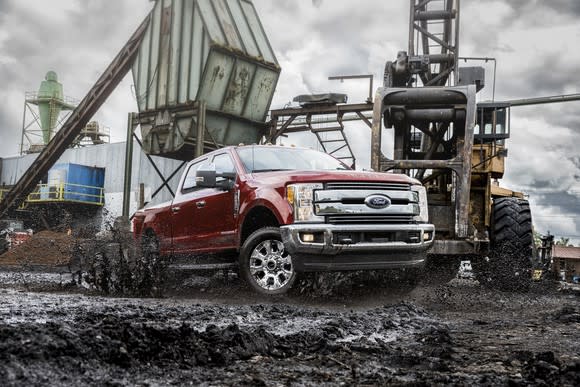What's Driving Automotive Sales Higher?
Last year, an impressive streak of annual U.S. new-vehicle sales gains ended, and with that came questions about whether the market would plateau or start a slow and steady decline. So far, so good, as sales through May have been better than expected. Let's take a look at some of last month's data from Ford Motor Company (NYSE: F) and Fiat Chrysler Automobiles (NYSE: FCAU), as well as trends that are driving sales higher.
The hard facts
U.S. new-vehicle sales jumped 4.7% in May -- above Edmunds' 3.5% industry forecast -- thanks to healthy demand from SUVs, crossovers, and trucks. May marked the third monthly sales increase, compared to the prior year, through the first five months of 2018. Despite analysts predicting a down year for industry sales volume, sales are up 1.2% through May.
"Zero-percent financing loans are growing too costly for automakers to offer, but that doesn't mean that incentives are not out there," said Jeremy Acevedo, Edmunds' manager of industry analysis, in a press release. "Automakers and dealers are simply turning toward other, more creative incentive structures in order to lure in consumers."
One driving force
Examples of a major driving force behind full-year sales gains can be found in Ford and FCA data: demand for trucks and crossovers. Sales of Ford trucks were up 9.4%, which helped offset a 13.3% decline in its car segment. Better yet, sales of the F-Series, Ford's bread-and-butter product, jumped 11.3% in May and have recorded their best start since 2000. The F-Series is on pace to notch its ninth consecutive annual gain in sales.

Ford's 2018 Ford Super Duty F-250 Lariat. Image source: Ford Motor Company.
It's fair to say that sales of FCA's Jeep brand carried the company to a total 11% sales gain in May. Jeep sales jumped 29% to just over 97,000, good enough to record the brand's best May sales result in history. A chunk of the gain was thanks to recently redesigned models such as the Jeep Cherokee, Compass, and Wrangler. On the flip side, the ultimate fates of FCA's Chrysler, Dodge, and Fiat remain up in the air, with demand for passenger cars shrinking and few to no specifics or product presentations offered at the company's recent presentation of its five-year plan.
One reason that sales are up so far this year is simply that demand for SUVs, crossovers, and trucks has been strong enough to offset the decline in passenger cars -- but there's another small factor that could be helping.
Interest rates climbing
"Higher interest rates appear to be incentivizing car shoppers, which is likely why we've seen stronger than expected sales so far this year," said Acevedo.
What investors need to understand is that this could be a short-term benefit for sales. The issue with increasing interest rates is that consumers currently believe rates will continue to rise, thus convincing some to purchase a car earlier than they might have if interest rates were expected to remain flat or decline. Essentially, that means we could be seeing demand being pulled forward during the first half of 2018, possibly producing slower-than-expected sales during the second half.
It'll be important for investors to watch whether sales soften through the remainder of 2018 -- or if the industry logs a surprise annual gain, as it has through May. Either way, it's a positive trend that sales of SUVs, crossovers, and trucks are powering average transaction prices (ATPs) higher. Per Kelley Blue Book estimates, ATPs for U.S. light-vehicle sales jumped $1,187 year over year to May's $35,635. That's great for auto investors: It helps drive improvements on the top and bottom lines, due to bigger price tags and fatter margins, even if sales slow later in the year.
More From The Motley Fool
Daniel Miller owns shares of Ford. The Motley Fool recommends Ford. The Motley Fool has a disclosure policy.

 Yahoo Finance
Yahoo Finance 